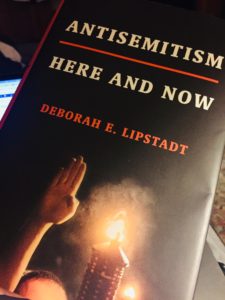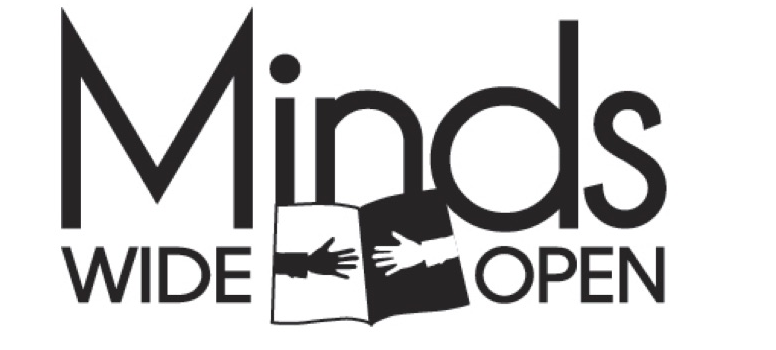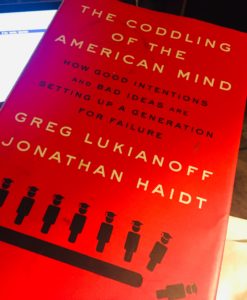Two ‘must reads’ for Millennials & Gen Z (and their parents)
Here are a couple of books I recently read that I wish were mandatory reading for anyone under the age of 30 … gulp, and also their parents. These books provide rational thinking for irrational thinking.
Most of us have recently read about college student’s and how their skeptical view of intellectual diversity is leading them down a path to mental fragility. Or perhaps you have seen the Twitter tirades featuring either progressive activists nurtured by identity politics or right-wing Neo-Nazis BOTH who quietly tip their hat to crude antisemitic tropes to score political points.
And it’s not only “kids these days” it’s also their parents (my generation) who are willing to muddy the waters in exchange for tribal identity. Jonathan Haidt and Greg Lukianoff, in The Coddling of the American Mind and Deborah Lipstadt in Antisemitism: Here and Now pick away these important issues that are twisted by people on both sides of the political divide. While each of these books is timely, they already need updated editions.
These are not thorough book reviews, just some thoughts I’m passing along.
- Greg Lukianoff and Jonathan Haidt The Coddling of the American Mind: How Good Intentions and Bad Ideas are setting up a generation for failure. (Penguin Press, 2018)
“The Great Untruths” are the recurring themes of The Coddling of the American Mind. Through the lens of these “untruths” Coddling assesses the current state of Gen Z college students (entering college around 2013) as unfortunate victims of their needy helicopter parent’s. So what are The Great Untruths?
- The Untruth of Facility: What doesn’t kill you makes you weaker.
- The Untruth of Emotional Reasoning: Always trust your feelings.
- The Untruth of Us versus Them: Life is a battle between good people and evil people.
Lukianoff (constitutional lawyer and founder of thefire.org: Foundation for Individual Rights in Education) and Haidt (social psychologist and professor) pick away at the corrosive culture of “safetysim” that has consumed U.S. education system (predominately college campuses) precipitated by contemporary nanny-state parenting.
Haidt and Lukianoff cite decades of studies and data revealing alarming patterns in parenting and attitudes towards political and intellectually diversity and free speech.
2. Deborah E. Lipstadt Antisemitism: Here and Now. (Schocken Books, 2019)
In Antisemitism: Here and Now we first learn why the author spells antisemitism without a hyphen or a capital A. Sorry readers, you’ll have to read the book to find out why. Lipstadt wrote this book pre-Pittsburgh Tree of Life Synagogue shooting and pre-U.S. Congressional freshman class (Alexandra Ocasio-Cortez)/Rashida Tlaib/Ilh an Omar) so it focuses mostly on the Trump era political divide and the increasingly “normalized” use of antisemitic tropes in modern discourse.
an Omar) so it focuses mostly on the Trump era political divide and the increasingly “normalized” use of antisemitic tropes in modern discourse.
The book is formatted using a series of fictional letters written to her by a Jewish student and a non-Jewish colleague. After introducing us to the definition and etymology of antisemitism, she divides the book into two basic views: Trump and the Left/College Campuses/Israel and no one is spared. First, she raps Trump mostly for what he doesn’t say, doesn’t disavow (which I found inconsistent with how she dealt with the other characters in the book) and for stoking antisemitic attitudes through his Tweets and “dog whistles”. She covers the Charlottesville “good people on both sides” speech and Trump’s inability (intentionally or not, she doesn’t say) to disassociate with White Nationalists and antisemites.
The second half of the book looks at antisemitism and the Left. She highlights every major bruhaha including Farrakhan-loving Women’s March leaders, high profile college campus confrontations over the Israel-Palestinian conflict, anti-Israel campus groupthink, BDS (Israel Boycott, Divestment and Sanctions movement), intimidation and bias against Jewish students and persistent use antisemitic conspiracy theories. What I found most useful in this section was her definition of antisemitism when it comes to criticizing Israel. Where is that line? we often ask ourselves. Lipstadt takes a stab at it and it may be helpful to those who find themselves paralyzed in a fiery debate on Israel.
Lipstadt also paints a bleak and depressing picture of antisemitism in Europe. It seems as though nothing has changed since 1938. She recounts various violent Islamic extremist attacks on Jews citizens and Jewish institutions and the rise of neo-nazis and white supremacist attitudes in Europe.
Lipstadt is sure to infuriate partisans because she is quite even-handed in her scorn.
I’m not sure I like the fake letter format, it seemed a bit schlocky and a distraction. I imagine Lipstadt could have written a compelling book without. And as I mentioned earlier, I would love to read an updated version of this book to include Lipstadt’s take on the recent synagogue attacks and our new opinionated U.S. congresswomen.


No comments